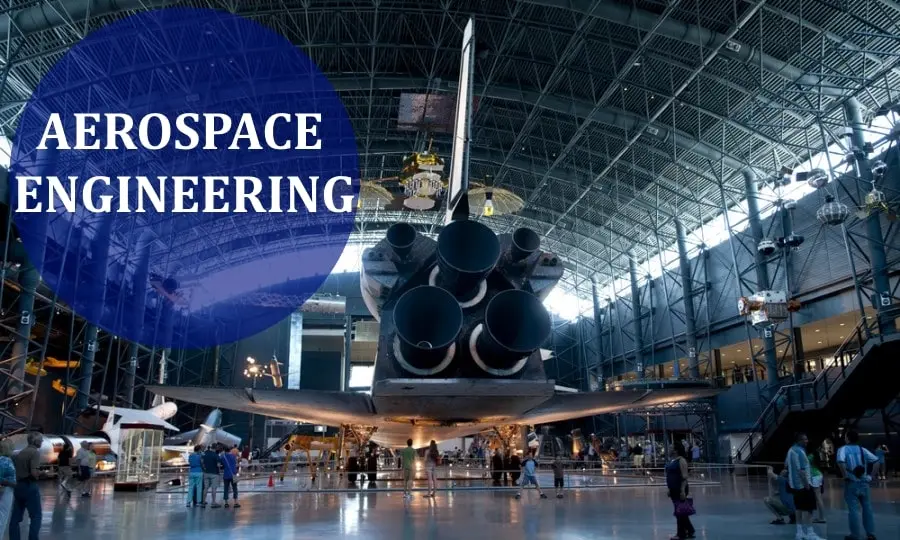

Aerospace Engineering
Sonalika S.

Aerospace engineering is the branch of engineering behind the design, construction and science of aircraft and spacecrafts. It is divided into two major overlapping branches: aeronautical engineering and astronautical engineering. The first deals with crafts that stay within the Earth’s atmosphere, while the second deals with crafts that operate outside of the Earth’s atmosphere.
Aeronautical engineering was the original term before the broader term “aerospace” overtook it in usage, as flight technology advanced to include operating crafts in outer space. Aerospace engineering is largely about artefacts that fly – including airplanes, rockets, satellites or helicopters. It is also about how fluids flow, control systems, the strength of materials and improving strength. It also deals with how to design things so that they can be reliably built and maintained.
Aerospace engineers design, develop and test aircraft, spacecraft or missiles, and supervise their manufacture. Those who work with aircraft are called aeronautical engineers, and astronautical engineers are those working specifically with spacecrafts.
Aerospace engineers develop new technologies for use in aviation, defence systems and space exploration, and sometimes specialize in areas like structures, vehicle movement and control, propulsion systems, communications, and overall vehicle design. They also may specialize in a particular type of aerospace product, such as commercial aircraft, helicopters, military fighter jets, missiles, spacecrafts and rockets. These engineers might also be experts in celestial mechanics, aerodynamics, thermodynamics, acoustics, propulsion, or guidance and control systems.
Topics covered in Aerospace Engineering
Semester 1 & 2:
- Basic Engineering Subjects
- English
- Mathematics
- Physics
- Chemistry
- Biology for Engineers
- Materials Science
- Principles of Environmental Sciences
- Engineering Mechanics
Semester 3 & 4:
- Electronics and Instrumentation
- Thermodynamics
- Manufacturing Technology
- Fluid Mechanics
- Numerical Methods
- Machines and Mechanisms
- Aerodynamics and Propulsion
Semester 5 & 6:
- Vibration and Noise
- Materials Technology
- Flight Dynamics
- Aerospace Structures
- Aerodynamics
- Space Technology
- Propulsion and Total Quality Management
- Reliability Engineering
- Economics and Principles of Management
- Aircraft Systems and Instruments
- Electives*
List of Electives for Aerospace Engineering*
- Boundary Layer Theory
- Helicopter Aerodynamics
- Computational Fluid Dynamics
- Rockets and Missiles
- Aircraft Engine and Instrument Systems
- Cryogenics
- Heat Transfer and Combustion Engineering
- Theory of Elasticity
- Theory of Plates and Shells
- Fatigue and Fracture Mechanics
- Computer-aided Design (CAD)
- Analysis and Experimental Stress Analysis
- Artificial Intelligence
- Avionics
- Creativity Innovation
- New Product Development
- Air-frame Maintenance and Repair
- Air Transportation and Aircraft Maintenance Management
- Automatic Control Systems
- Space Craft Technology
- Flexible Manufacturing Systems
Practicals and lab sessions are usually conducted throughout the course in subjects like aerospace CAD laboratory, aircraft design projects, aerospace structures lab, manufacturing and assembly drawing or computer skills.
Colleges/Institutes for Aerospace Engineering Courses
Some colleges that offer programmes such as a Bachelor of Technology (B.Tech.) or Bachelor of Engineering (B.E.) in Aerospace or Aeronautical Engineering include:
- Indian Institute of Technology Madras
- Indian Institute of Technology Bombay
- PEC University of Technology
- Indian Institute of Technology Kanpur
- Indian Institute of Technology Kharagpur
- Institute of Aeronautical Engineering Dehradun
Note: Programmes are subject to change, it is advisable to check directly with a school for current programme availability.
Related Links
Latest News
People Reading Now

CBSE Compartment Result 2023 OUT: Click For Direct Link



CSAB 2023: Special Round Registration Begins Today


